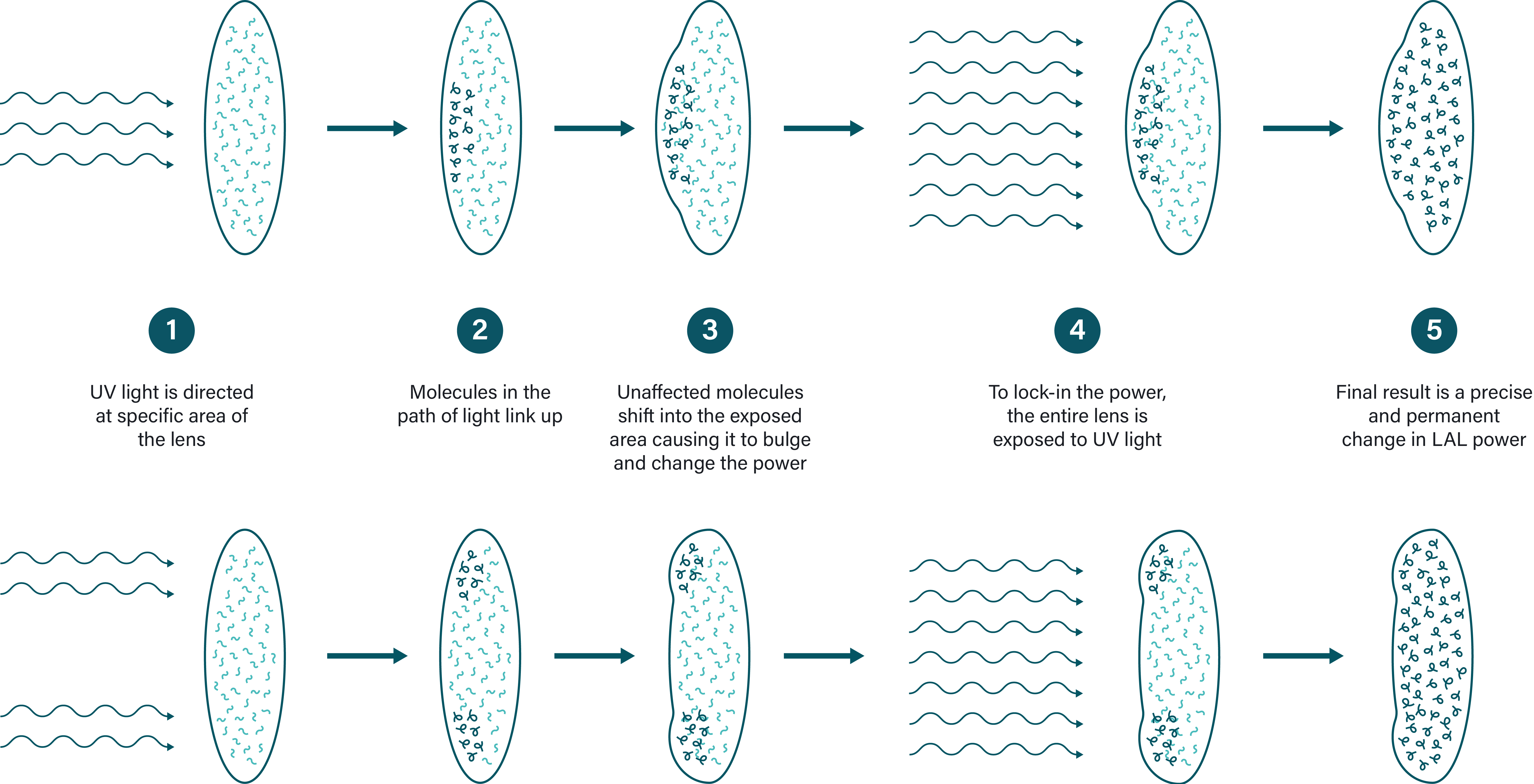NEW! Light Adjustable Lens (LAL)
Before surgery, patients undergo extensive eye measurements to make sure the new intraocular lens (IOL) being implanted is right for them. However, even with advanced technology, the visual outcome post-surgery might not be as expected. Which is why we’re excited to announce a new player in the game of IOLs – the Light Adjustable Lens (LAL)!
Now available at PVSC, RxSight’s Light Adjustable Lens is the first and only lens in Canada that can be modified after surgery to optimize visual outcomes. This means that cataract patients can go about their day and test out their vision with the new lens and if it’s not ideal, Dr. Youssef can customize their vision up to three times before “locking it in”. By fine-tuning vision with the use of quick and safe UV light treatments, LAL can provide patients the most precise results with their vision.
The LAL delivers superior visual outcomes that traditional IOLs cannot match. In a study of 600 subjects, those who received the LAL implant followed by adjustments were twice as likely to achieve 20/20 distance vision at 6 months without glasses as those who received a standard monofocal IOL.
The Science Behind How LAL Works
The LAL is made up of molecules that are sensitive to light embedded in silicone. By shining an UV light beam on specific areas of the lens, it can alter its shape predictably without any surgery. Only the molecules in the path of the light link together. By principles of biochemistry, this causes the molecules that weren’t exposed to light and aren’t yet linked to migrate into the areas that were exposed to light.
Changing the shape of the lens is how the power changes and is customized for each patient’s vision and can adjust for astigmatism, nearsightedness, or farsightedness. By shining light at the center, the untreated molecules will move into the center causing it to bulge and increasing the power. However, by treating the edges of the lens, the molecules will move outwards causing it to bulge and the center will be flatter, reducing its power.
We provide special UV blocking sunglasses for you to wear temporarily to protect the IOL from receiving too much UV light until the adjustment process is complete. Once the patient is satisfied with their vision, a final beam of light on the entire lens causes all the molecules to link up causing the power to “lock-in”.

What to Expect After Surgery
After your Light Adjustable Lens has been implanted in your eye, it is adjusted to customize your vision so there are 2 major differences following your surgery as compared to a typical IOL:
1. You Must Wear Ultraviolet (UV) Protective Glasses
But don’t worry, it’s not forever! After surgery, it’s absolutely crucial that you wear UV protective glasses because any exposure to indoor and outdoor sources of UV light (like the sun) can cause random changes to the LAL which would unpredictably alter your vision. To prevent this, you’ll be provided with UV protective glasses to wear immediately following surgery from the moment you implant the LAL until after your final light treatment.
You can remove your protective glasses when sleeping and temporarily when showering, washing your face, or applying eye drops as long as you aren’t exposed to direct sunlight. After your final light treatment by 24 hours, no more changes can be made to the implanted LAL so you can remove the UV protective glasses and enjoy your new and improved vision!
2. You Will Undergo A Series Of Light Treatments
Once your eye has healed, you’ll return to PVSC to have your vision tested and preview and compare possible vision outcomes based on your unique preferences and lifestyle requirements before selecting a prescription for your adjustable lens. The Light Delivery Device (LDD) non-invasively delivers the UV light to precisely reshape your LAL based on the visual correction that is needed to target your custom prescription. The adjustment process is painless and takes less than 2 minutes.
The first customized treatment is typically performed several weeks after the cataract surgery when the vision has stabilized. Additional adjustments are performed at approximately weekly intervals as determined by Dr. Youssef. It is possible to make up to three adjustments, although some eyes require only one. When the result has been optimized, two final “lock-in” treatments are performed, after which the IOL can no longer change or be adjusted. After lock-in, no extra protection is needed for sunlight or UV light.
